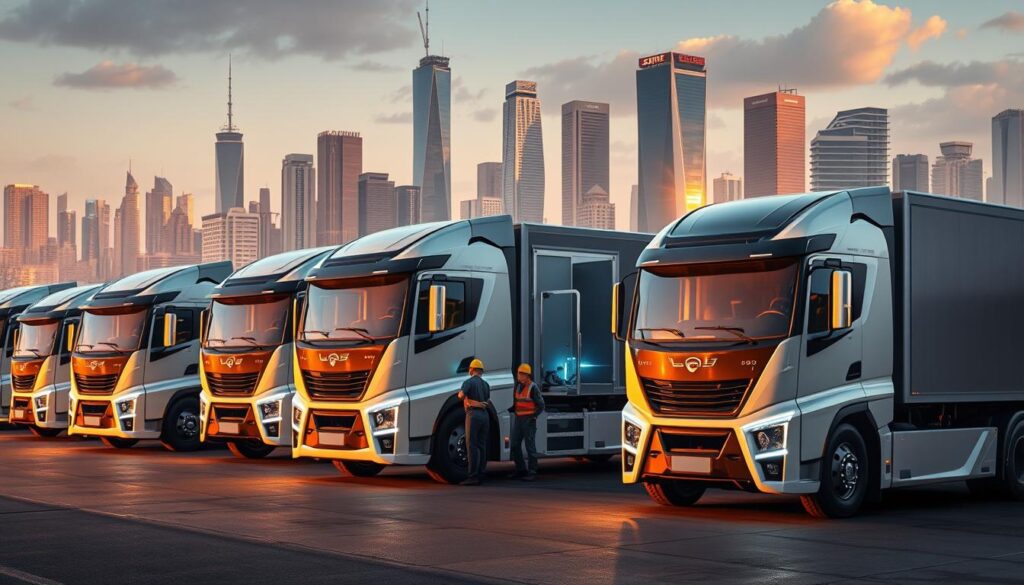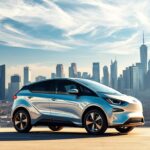

Best EV
The world is shifting towards a more sustainable future, and electric vehicles are at the forefront of this revolution. With a growing number of models available, it’s becoming increasingly easier to make the switch from traditional gas-powered cars.
As the demand for best EVs continues to rise, manufacturers are responding with innovative designs and cutting-edge technology. From compact city cars to luxury SUVs, there’s an electric car to suit every lifestyle and budget.
This article will explore the top electric vehicles on the market, providing you with a comprehensive guide to making an informed decision. Whether you’re a seasoned EV enthusiast or just starting to explore the world of electric cars, we’ve got you covered.
Key Takeaways
- Top electric vehicles for various budgets and lifestyles
- The latest innovations in EV technology
- A comparison of different electric car models
- Tips for choosing the best EV for your needs
- An overview of the benefits of switching to electric cars
The Electric Revolution: Why EVs Are Taking Over
As the world shifts towards a more environmentally conscious mode of transportation, electric vehicles are leading the charge. The increasing adoption of EVs is driven by their numerous benefits, ranging from environmental advantages to economic savings.
Environmental Benefits of Electric Vehicles
Electric vehicles contribute significantly to reducing greenhouse gas emissions and air pollution. By switching to EVs, we can decrease our reliance on fossil fuels and lower our carbon footprint. Zero tailpipe emissions make EVs an attractive option for those looking to minimize their environmental impact.
Economic Advantages of Going Electric
In addition to their environmental benefits, EVs offer substantial economic advantages. The lower operating costs of EVs, including reduced fuel and maintenance expenses, make them an economically viable choice. Furthermore, many governments offer incentives for purchasing EVs, such as tax credits and rebates, which can help offset the initial cost.
By adopting electric vehicles, consumers can enjoy significant savings over time, making EVs a smart financial decision as well as an environmentally friendly one.
Understanding Electric Vehicle Types and Technologies
As the electric vehicle market expands, understanding the different types and technologies becomes increasingly important. Electric vehicles (EVs) are not just a single category; they encompass a range of options designed to meet various consumer needs and preferences.
Battery Electric Vehicles (BEVs)
Battery Electric Vehicles, or BEVs, are powered solely by electricity stored in their batteries. They have no internal combustion engine and are charged via an electrical outlet or charging station. BEVs are known for their zero emissions, making them an environmentally friendly option. Popular models include the Tesla Model 3 and the Nissan Leaf.
Plug-in Hybrid Electric Vehicles (PHEVs)
Plug-in Hybrid Electric Vehicles, or PHEVs, combine a battery-powered electric motor with an internal combustion engine. They can run on electricity alone for a certain distance before switching to hybrid mode. PHEVs offer flexibility for long trips and areas with limited charging infrastructure. Examples include the Chevrolet Volt and the Toyota Prius Prime.
Battery Technology and Performance
Advancements in battery technology have significantly improved the performance and range of electric vehicles. Modern EV batteries are designed to be more efficient, durable, and affordable. Improvements in battery tech have enabled longer driving ranges and faster charging times, making EVs more practical for everyday use.
The future of electric vehicles is closely tied to advancements in battery technology, with ongoing research into solid-state batteries and other innovations that promise to further enhance EV performance and accessibility.
Best Luxury Electric Vehicles in 2023
The year 2023 has brought forth an impressive array of luxury electric vehicles that are changing the game. As consumers look for sustainable yet opulent options, several models stand out for their performance, design, and technology.
Tesla Model S
Overview
The Tesla Model S is a pioneer in the luxury electric vehicle segment, known for its exceptional range and performance. It’s available in various trim levels, including the high-performance Plaid model.
Pros
- Exceptional Range: Up to 405 miles on a single charge.
- Performance: The Plaid model accelerates from 0-60 mph in under 2 seconds.
- Technology: Features a massive 17-inch touchscreen display.
Cons
- Price: Starts at around $100,000, with the Plaid model exceeding $130,000.
- Reliability Concerns: Some owners have reported issues with the vehicle’s electronics.
Features
The Tesla Model S boasts a luxurious interior, advanced Autopilot capabilities, and a comprehensive suite of safety features.
Lucid Air
Overview
The Lucid Air is a newcomer to the luxury EV market, making waves with its impressive range and sleek design. It’s positioned as a direct competitor to the Tesla Model S.
Pros
- Range: Offers up to 520 miles on a single charge.
- Luxurious Interior: Features high-quality materials and spacious cabin.
- Performance: The Grand Touring model delivers 819 horsepower.
Cons
- Price: Starts at around $80,000, but higher trims are pricey.
- Charging Network: Lucid’s charging infrastructure is still developing.
Features
The Lucid Air includes a cutting-edge infotainment system, advanced driver assistance systems, and a unique glass roof. Its interior is designed to provide a serene driving experience.
Mercedes EQS
Overview
The Mercedes EQS is the luxury electric flagship from Mercedes-Benz, embodying the brand’s commitment to electric mobility. It offers a blend of luxury, performance, and innovative technology.
Pros
- Luxurious Interior: Features a hypoallergenic air filter and advanced ambient lighting.
- Range: Offers up to 485 miles on a single charge.
- Performance: The EQS 53 AMG model delivers 751 horsepower.
Cons
- Price: Starts at around $100,000.
- Infotainment System: Some users find the MBUX system complex.
Features
The Mercedes EQS includes a comprehensive array of standard features, including a massive 56-inch Hyperscreen dashboard, advanced safety features, and a luxurious interior.
Best Electric SUVs for Families
As families increasingly turn to electric vehicles, the demand for electric SUVs that combine space, safety, and performance has never been higher.
Electric SUVs offer a compelling package for families, providing the benefits of electric vehicles, such as reduced emissions and lower operating costs, along with the practicality and versatility that SUVs are known for.
Tesla Model Y
Overview
The Tesla Model Y is a compact luxury electric SUV that has gained popularity for its impressive range, advanced technology, and spacious interior.
Pros
- Exceptional Range: The Model Y offers one of the longest ranges among electric SUVs, making it ideal for both daily commutes and longer trips.
- Advanced Safety Features: Tesla’s Autopilot technology and a 5-star safety rating make it a safe choice for families.
- Spacious Interior: Despite its compact size, the Model Y offers ample space for passengers and cargo.
Cons
- Price: The Model Y is priced at a premium, although its long-term savings on fuel and maintenance can offset the initial cost.
- Limited Charging Infrastructure in Some Areas: While Tesla’s Supercharger network is extensive, charging can be less convenient in certain regions.
Features
- Panoramic Glass Roof: Adds to the sense of space and openness inside the vehicle.
- Premium Audio System: Offers an enhanced driving experience with superior sound quality.
Ford Mustang Mach-E
Overview
The Ford Mustang Mach-E is an electric SUV that combines the iconic Mustang styling with the benefits of electric propulsion, offering a compelling blend of performance, technology, and practicality.
Pros
- Dynamic Performance: The Mach-E offers impressive acceleration and handling, making it enjoyable to drive.
- Generous Interior Space: Provides ample room for passengers and cargo, suitable for family needs.
- Advanced Technology: Features Ford’s SYNC 4 infotainment system and a range of driver assistance technologies.
Cons
- Range Variability: The actual range can vary significantly based on driving habits and conditions.
- Some Users Find the Infotainment System Overwhelming: The feature-rich SYNC 4 system can be complex to navigate.
Features
- Hands-Free Driving Capability: Ford’s BlueCruise technology allows for hands-free driving on certain roads.
- 360-Degree Camera System: Enhances visibility and safety when maneuvering.
Hyundai Ioniq 5
Overview
The Hyundai Ioniq 5 is a dedicated electric vehicle that showcases Hyundai’s commitment to EV technology, offering a unique blend of retro-futurism, spaciousness, and advanced features.
Pros
- Ultra-Fast Charging: The Ioniq 5 supports 350 kW charging, making it one of the fastest-charging EVs available.
- Versatile Interior: Features a flat floor and configurable seating, enhancing its practicality for families.
- Comprehensive Warranty: Hyundai offers a lengthy warranty, providing peace of mind for owners.
Cons
- Design Polarizing: The Ioniq 5’s retro-futuristic design may not appeal to everyone.
- Some Features Require Higher Trim Levels: Certain desirable features are only available on higher trim levels.
Features
- Vehicle-to-Load (V2L) Capability: Allows the Ioniq 5 to supply power to external devices, a useful feature for camping or during power outages.
- Advanced Driver Assistance Systems: Includes a range of safety features, such as adaptive cruise control and lane-keeping assist.
Best Affordable Electric Vehicles Under $40,000
As the electric vehicle market expands, buyers on a budget can now consider several affordable options under $40,000. This section explores three compelling models: the Chevrolet Bolt EV, Nissan Leaf, and Mini Cooper SE.
Chevrolet Bolt EV
Overview
The Chevrolet Bolt EV is a compact electric vehicle that offers an impressive range and modern features at an affordable price. With a starting price under $30,000, it’s an attractive option for those looking to go electric.
Pros
- Affordability: Priced competitively, making it accessible to a wide range of buyers.
- Range: Offers up to 259 miles on a single charge, according to EPA estimates.
- Technology: Features a modern infotainment system and advanced safety features.
Cons
- Interior Space: While spacious for its class, it may feel cramped for taller passengers.
- Battery Degradation: Some owners have reported battery degradation over time.
Features
The Chevrolet Bolt EV comes with a range of features, including a touchscreen infotainment system, Apple CarPlay, and Android Auto. It also includes a suite of advanced safety features like forward collision alert and lane departure warning.
Nissan Leaf
Overview
The Nissan Leaf is one of the most recognizable electric vehicles on the market, known for its reliability and affordability. With a starting price under $30,000, it’s a popular choice for budget-conscious buyers.
Pros
- Reliability: Proven track record for reliability and durability.
- Affordability: Competitive pricing makes it an attractive option.
- EPA Range: Offers up to 226 miles on a single charge.
Cons
- Outdated Design: The current generation’s design may feel dated compared to newer models.
- Limited Features: Base models may lack some modern features.
Features
The Nissan Leaf includes features like a user-friendly infotainment system, e-Pedal for one-pedal driving, and a range of safety features including automatic emergency braking.
Mini Cooper SE
Overview
The Mini Cooper SE brings the iconic Mini design to the electric vehicle world, offering a unique blend of style and sustainability. Priced around $30,000, it’s an attractive option for those looking for a premium feel.
Pros
- Style: Retains the classic Mini Cooper design with a modern electric twist.
- Handling: Known for its agile handling and responsive steering.
- Premium Feel: Offers a high-end interior and driving experience.
Cons
- Limited Range: Offers up to 110 miles on a single charge, less than some competitors.
- Price: While competitive, it’s pricier than some other electric vehicles.
Features
The Mini Cooper SE features a modern infotainment system, LED lighting, and a range of safety features. It also includes unique elements like a heated steering wheel and optional trim packages.
| Model | Starting Price | EPA Range |
|---|---|---|
| Chevrolet Bolt EV | $29,000 | 259 miles |
| Nissan Leaf | $29,000 | 226 miles |
| Mini Cooper SE | $30,750 | 110 miles |
As the market for electric vehicles continues to evolve, these models represent some of the best affordable options available today. When choosing an electric vehicle, consider factors like range, features, and overall cost to find the best fit for your needs.
“The future of driving is electric, and with models like the Chevrolet Bolt EV, Nissan Leaf, and Mini Cooper SE, going green has never been more accessible or appealing.”
Best Electric Trucks for Work and Play
Electric trucks are gaining popularity for their capability, efficiency, and eco-friendliness, making them ideal for both work and recreational activities. As the automotive industry shifts towards electric vehicles, trucks are not left behind, offering powerful and sustainable options for consumers.
Ford F-150 Lightning
Overview
The Ford F-150 Lightning is an all-electric version of the best-selling F-150, offering impressive performance and capability. With its powerful electric motors, it delivers instant torque and a smooth, quiet ride.
Pros
- Impressive Performance: The F-150 Lightning offers exceptional acceleration and towing capacity.
- Advanced Technology: It features a large touchscreen, advanced driver-assistance systems, and a robust infotainment system.
Cons
- Range Anxiety: While it offers a decent range, long trips might require careful planning.
- Price: The higher trim levels can be quite expensive.
Features
The F-150 Lightning comes with a range of innovative features, including Pro Power Onboard, which provides electricity for tools and equipment, and an available 11.1-inch LCD display.

Rivian R1T
Overview
The Rivian R1T is an electric pickup truck that combines adventure-ready capability with luxury. It’s designed for both on-road comfort and off-road prowess.
Pros
- Adventure Capability: The R1T is designed for rugged terrains and offers a tank-turning capability.
- Luxurious Interior: It features a premium interior with advanced technology and comfort features.
Cons
- Limited Charging Infrastructure: While Rivian has its charging network, it still lags behind some competitors.
- Price Point: The R1T is positioned in the premium segment, making it a significant investment.
Features
The R1T includes a large touchscreen, a digital instrument cluster, and a range of driver-assistance features. It also offers a unique gear selector and an available tonneau cover.
| Model | Range | Towing Capacity | Price |
|---|---|---|---|
| Ford F-150 Lightning | up to 300 miles | up to 10,000 lbs | Starting at $39,974 |
| Rivian R1T | up to 400 miles | up to 11,000 lbs | Starting at $69,000 |
| GMC Hummer EV | up to 350 miles | up to 11,000 lbs | Starting at $79,995 |
GMC Hummer EV
Overview
The GMC Hummer EV is an ultra-luxurious electric pickup truck that combines the iconic Hummer brand with cutting-edge electric vehicle technology.
Pros
- Exceptional Capability: The Hummer EV offers incredible off-road capability with its advanced four-wheel-drive system.
- Luxury Features: It includes a premium interior, advanced tech, and unique features like the “Wattage” display.
Cons
- High Price: The Hummer EV is one of the more expensive options in the electric truck market.
- Size: Its large size can be challenging in tight spaces.
Features
The GMC Hummer EV features an available “Wattage” display, a Super Cruise hands-free driving system, and an advanced infotainment system with a large touchscreen.
Electric Vehicle Range Comparison: How Far Can You Go?
With the increasing adoption of electric vehicles, comparing their ranges is essential for making informed purchasing decisions. Electric vehicle range is a critical factor that varies significantly across different models and technologies.
Long-Range Champions (300+ Miles)
Some electric vehicles stand out for their exceptional range, offering over 300 miles on a single charge. Models like the Tesla Model S Long Range and the Lucid Air Grand Touring are leading examples, providing drivers with the flexibility to undertake long journeys without frequent recharging.
Mid-Range Options (200-300 Miles)
For those who don’t need the maximum range, mid-range EVs offer a balance between capability and cost. Vehicles such as the Chevrolet Bolt EV and the Nissan Leaf Plus fall into this category, catering to daily commutes and occasional longer trips.
Real-World Range vs. EPA Estimates
It’s crucial to understand that real-world range can differ from EPA estimates due to factors like driving habits, climate, and terrain. Actual range may vary, so it’s wise to research and adjust expectations accordingly.
| Model | EPA Estimated Range | Real-World Range |
|---|---|---|
| Tesla Model S Long Range | 405 miles | 380-400 miles |
| Lucid Air Grand Touring | 516 miles | 480-500 miles |
| Chevrolet Bolt EV | 259 miles | 230-250 miles |
Understanding the range of electric vehicles is key to unlocking their potential. By comparing different models and considering real-world factors, consumers can make informed decisions that meet their needs.
Charging Infrastructure Across the United States
The growth of the electric vehicle market is closely tied to the development of charging infrastructure, a critical component that determines the practicality of EVs for daily use and long-distance travel.
Home Charging Solutions
Home charging is a convenient option for EV owners, offering the ability to charge vehicles overnight. Most EV manufacturers provide a Level 1 (120V) charger, which can be used with a standard household outlet, and a Level 2 (240V) charger that requires a dedicated charging station. Level 2 charging significantly reduces charging time, making it a popular choice among EV owners.
Public Charging Networks
Public charging networks are expanding rapidly across the United States, with various networks such as ChargePoint, Electrify America, and EVgo. These networks offer a mix of Level 2 and DC Fast Charging stations, catering to different needs of EV drivers.
Fast Charging vs. Level 2 Charging
Fast charging, also known as DC Fast Charging, can charge an EV to 80% in under 30 minutes, making it ideal for long trips. In contrast, Level 2 charging takes several hours to achieve a full charge but is more suitable for daily driving needs.
Planning Road Trips with an EV
Planning road trips with an EV involves mapping out charging stops along the route. Many EV manufacturers and third-party apps offer trip planning tools that help identify charging stations. Understanding the charging infrastructure along your route can make long-distance EV travel more convenient.
Electric Vehicle Incentives and Tax Credits in 2023
Electric vehicle buyers can now benefit from a range of incentives and tax credits in 2023, thanks to government initiatives. These incentives are designed to encourage the adoption of electric vehicles, reducing our reliance on fossil fuels and mitigating environmental impacts.
The incentives available can be broadly categorized into federal tax credits, state and local incentives, and utility company rebates. Understanding these programs can help buyers save money and make informed decisions.
Federal Tax Credits Under the Inflation Reduction Act
The Inflation Reduction Act has reformed the federal tax credit system for electric vehicles, introducing new criteria and limits. To qualify, vehicles must have a manufacturer’s suggested retail price (MSRP) below $80,000 for vans, SUVs, and pickup trucks, and $55,000 for other vehicles. Additionally, the vehicle must be assembled in North America, and there are income limits for buyers.
Key Benefits:
- Up to $7,500 tax credit for eligible new electric vehicles
- $4,000 credit for used electric vehicles
- Income limits apply for buyers to qualify
State and Local Incentives
Many states offer additional incentives, including rebates, exemptions from certain fees, and access to HOV lanes. For example, California offers a rebate of up to $5,000 for eligible vehicles through the Clean Vehicle Rebate Project.
Some popular state incentives include:
- California: Up to $5,000 rebate
- Colorado: $5,000 state tax credit
- Massachusetts: Up to $2,500 rebate
Utility Company Rebates and Programs
Utility companies also offer rebates and special programs for electric vehicle owners. These can include discounted electricity rates for EV charging, rebates for home charging station installations, and more.
Examples of utility company programs:
| Utility Company | Program | Benefit |
|---|---|---|
| Pacific Gas & Electric | EV Rate Plan | Discounted electricity rates for EV charging |
| Southern California Edison | Charge Ready Program | Rebates for commercial EV charging infrastructure |
By taking advantage of these incentives, electric vehicle buyers can significantly reduce the cost of ownership. It’s essential to research and understand the specific programs available in your area.

Total Cost of Ownership: Are Electric Vehicles Worth It?
Electric vehicles (EVs) are often scrutinized for their cost, but a deeper look into their total cost of ownership reveals significant benefits. Understanding the various factors that contribute to the overall cost can help potential buyers make informed decisions.
Purchase Price Comparison
The initial purchase price of EVs is often higher than that of their gasoline-powered counterparts. However, prices are decreasing as technology advances and economies of scale are achieved through higher production volumes.
Maintenance Cost Savings
EVs typically offer savings on maintenance costs due to their simpler drivetrain and fewer moving parts compared to traditional internal combustion engine vehicles. Key savings areas include:
- Less frequent brake replacements due to regenerative braking
- No oil changes required
- Reduced wear on certain components
Fuel/Electricity Cost Analysis
One of the most significant advantages of EVs is the cost of “fueling.” Electricity is generally cheaper than gasoline, and EVs convert about 60-70% of the electrical energy from the grid to power the wheels, while gasoline vehicles only convert about 20% of the energy in gasoline to power the wheels.
Resale Value Considerations
As EVs become more mainstream, their resale values are becoming more competitive with traditional vehicles. Factors influencing resale value include battery health, charging infrastructure availability, and government incentives.
In conclusion, while the initial purchase price of EVs might be higher, the total cost of ownership often favors EVs due to savings on maintenance and “fuel.” As technology continues to evolve, the economic case for EVs is likely to strengthen.
The Future of Electric Vehicle Technology
The electric vehicle industry is poised for significant advancements, transforming the way we drive and interact with our vehicles. As technology continues to evolve, we’re seeing exciting developments in various areas.
Upcoming Models to Watch
Several new electric vehicle models are set to hit the market, offering improved range, performance, and features. Tesla, Lucid, and Rivian are among the brands leading the charge.
Solid-State Battery Advancements
Solid-state batteries promise to revolutionize EV technology with enhanced safety, energy density, and charging speeds. Toyota and Volkswagen are investing heavily in this technology.
Autonomous Driving and Connected EV Features
Autonomous driving capabilities and connected features are becoming increasingly sophisticated, enhancing the driving experience and paving the way for a future of smart mobility.
| Feature | Current Status | Future Development |
|---|---|---|
| Solid-State Batteries | In Development | Mass Production |
| Autonomous Driving | Limited Availability | Widespread Adoption |
Conclusion: Finding Your Perfect Electric Vehicle
Choosing an electric vehicle can be a daunting task, given the numerous options available in the market. However, by considering your needs, budget, and preferences, you can find the perfect EV that suits your lifestyle.
Whether you’re looking for a luxury EV like the Tesla Model S or Lucid Air, a family-friendly SUV like the Tesla Model Y or Hyundai Ioniq 5, or an affordable option like the Chevrolet Bolt EV or Nissan Leaf, there’s an electric vehicle out there for you.
When selecting an EV, consider factors such as range, charging infrastructure, and total cost of ownership. With the right information, you can make an informed decision and enjoy the benefits of electric vehicle ownership, including reduced environmental impact and lower operating costs.
By understanding the different types of electric vehicles, their technologies, and the incentives available, you can find the perfect EV that meets your needs and enhances your driving experience.
FAQ
What is the average range of electric vehicles available today?
How long does it take to charge an electric vehicle?
Are electric vehicles more expensive than gasoline-powered cars?
What are the environmental benefits of switching to electric vehicles?
Can I charge an electric vehicle at home?
What incentives are available for buying an electric vehicle?
How do electric vehicles perform in cold weather?
Are there enough public charging stations?
Can electric vehicles be used for long road trips?
What is the lifespan of an electric vehicle battery?
Add a comment Cancel reply
Categories
- Auto Detailing (6)
- Car News (13)
- Car Reviews (10)
- Uncategorized (2)
Recent Posts
About us

Popular Tags
Related posts


New and Second hand EV

Tesla autopilot






